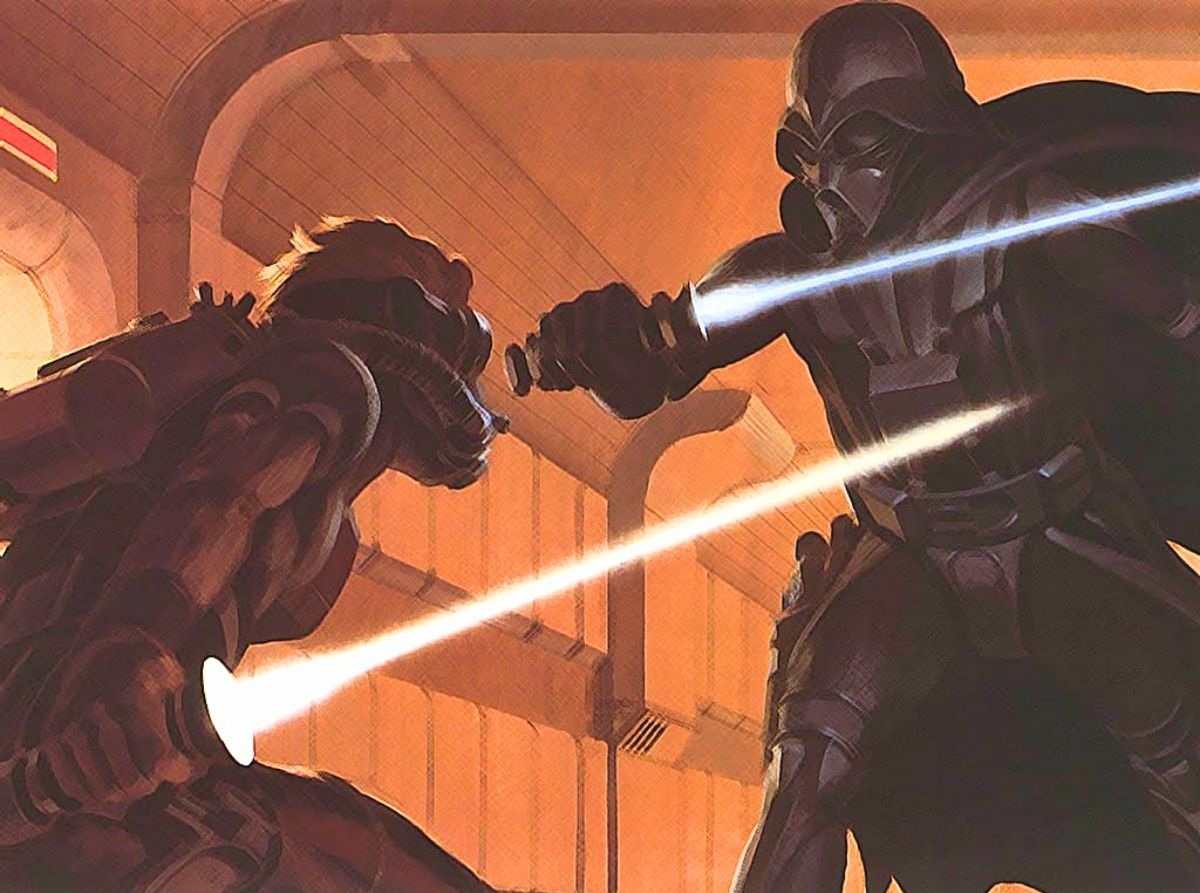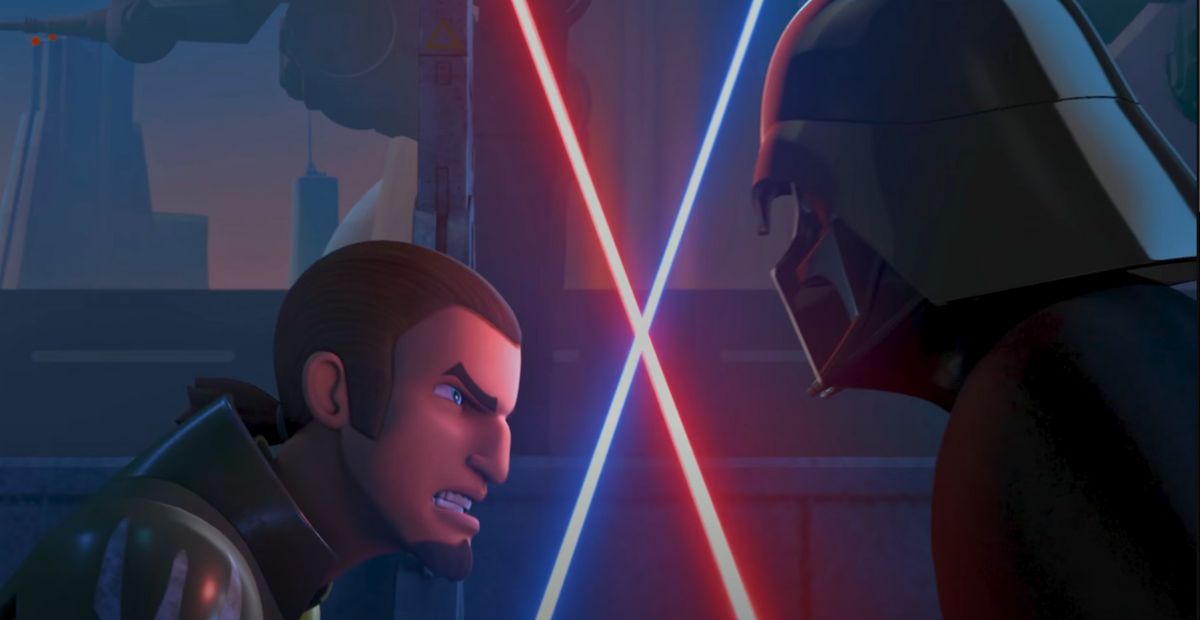As we watch Rebels, we may have noticed differences from The Clone Wars. The artistic design of the show is distinct, including the look of the lightsabers. In Rebels, the lightsabers are much thinner than what we may be accustomed to. Why is that? The chief reason is the artwork of Ralph McQuarrie, but we can also see how they helped the visual storytelling.
The Art of McQuarrie
Several fans are on the right track with the explanation here. They point out that lightsabers in the series are intentionally “supposed to be based off of the original Star Wars concept art” and the work of Ralph McQuarrie. As such, the lightsabers act like rapiers in fencing and convey a sense of the franchise’s origins.
For many fans, McQuarrie is “the first artist that comes to mind” for “visually defining Star Wars.” He developed the original concepts for Vader and 3PO and set the tone for the original trilogy.

As Lucas said about McQuarrie, “he was a generous father to a conceptual art revolution that was born of his artwork.” It is fitting that his pioneering work is instilled in the Rebels series.
The planet Lothal, which “acted as the series’ center of gravity,” reflects his work, along with “the thin, almost translucent blades” that appear in the show. As Dave Filoni confirms, “We wanted something that was going to be reminiscent of the Original Trilogy” and based on McQuarrie’s designs. Like the lightsabers in the concept art, those in Rebels “taper to narrow points at the end.”
We can also see McQuarrie’s influence in the rounded character faces and the character Zeb, who is based on an early version of Chewbacca (as fans noted above). Darth Vader is another notable case, with his helmet taking “the narrow shape and sharp angles of McQuarrie’s original concept paintings.”
In the above Star Wars article, artist Kilian Plunkett also indicated that the starships in Rebels could be the most heavily McQuarrie-influenced element. For them, the designers drew on McQuarrie’s work and also Kenner toys from the late 1970s to the early 1980s.
The Visual Storytelling
Harkening back to the origins of Star Wars is not the only reason for the thinner lightsabers in Rebels. This original lightsaber design also aids the visual storytelling.
By having thinner blades, “the animators could create fight scenes filled with more dynamism and fluidity.” This makes sense, given the desire to depict “combat sequences” in an exciting way. This creative choice likewise sets the series apart from The Clone Wars.
In this compilation of Rebels lightsaber duels, we can see proof of the effectiveness of this visual storytelling choice. Kanan Jarrus swiftly took on the Grand Inquisitor, who also sported a thin red blade and then double-thin, whirling blades. The spinning blades of other Inquisitors also take on an enhanced look.
The use of double-bladed spinning blades in the show simultaneously reflects how thinner lightsabers lend themselves to newer ideas. The Inquisitors were not part of the original trilogy, but their lightsaber fighting is enhanced by the original art concepts. Inquisitor lightsabers come forth as “frightful weapons” and even come in useful as helicopter blades.
While not all fans embrace the thinner lightsabers, their use in duel scenes is a reason for their appeal. Others prefer this lightsaber type over those used in The Clone Wars.
Lightsabers Are Thinner in Rebels
The lightsaber blades in Rebels are purposefully thinner. Ralph McQuarrie’s artistic influence is at the heart of this creative decision, as a way to connect with Star Wars origins. Yet, we can also see how thinner lightsabers enhance the visual storytelling elements of the series.

